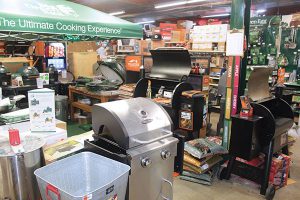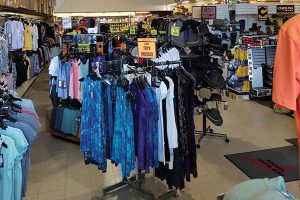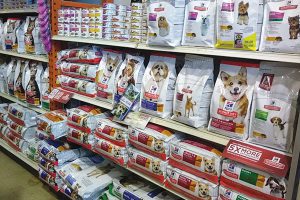There are often multiple factors that drive consumers to make a purchase. Sometimes price points, durability and convenience are the main motivation. Then again, sometimes pure brand recognition can secure a sale and let them show off to their friends. Whether it’s a new grill in the backyard or a shiny new drill in the toolbox, top brands often command a certain respect among consumers. These anchor brands can define certain departments in a store, draw customers based on their name alone and serve vital roles in sales and marketing for retailers.
In addition to name recognition and broader advertising benefits that come with stocking well-known brands across multiple categories, these products often have added benefits like regional exclusivity and price controls.
On the following pages, find out how two retailers have used name-brand products to enhance their own operations. Learn how they addressed some of the challenges that can come with stocking such sought-after product lines.
Community Spirit

Part of the value of a brand name that draws crowds to events or the salesfloor is that loyalists love discussing them with other people who share their interest. Anyone who has attended a grilling event sponsored by a popular manufacturer or visited a fan page dedicated to a particular outdoor apparel line has seen how fandom can drive interest and sales.
Retailers who invest in anchor brands can take advantage of consumer communities and treat them like built-in customers who want to be informed of their favorite product’s availability. For John Fix, co-owner of Cornell’s True Value in Eastchester, New York, this rabid fan base comes out in droves during a popular grilling event and stays a reliable customer base throughout the year.
Cornell’s True Value carries a variety of anchor brands across its product inventory, including in lawn and garden, grilling, outdoor power equipment and sporting goods.
“These are consumers who know maybe before we do what the next big thing is for their brand. They’ve subscribed to newsletters, they’re talking online with other fans and they’ll be asking us about a new product before it even ships,” Fix says. “It’s hard to find that kind of loyalty, so we try to use it by having the products available, in stock and available with plenty of add-on items.”
The possibility of add-on sales with anchor brands can also open the door for a smaller but still vital use of brand power. While larger manufacturers are likely to produce and ship their own accessory items, there are smaller manufacturers that work exclusively on accessories meant to work with one or more high-volume brand.
For grills, accessories can range from pizza stones to high-end tongs. The accessory manufacturers may not have the kind of advertising power the main anchor brand products can take advantage of, but there’s plenty of word-of-mouth advertising within the larger consumer community.
“We find it important to be included in those conversations. Usually the truly committed fans are eager to discuss a new discovery or a specific item they’re looking for, so we keep ourselves open to possibilities,” Fix says. “These are products that are used in leisure time and as conversation starters, and people want the eye-catching product for their homes.”
“There are a number of factors that come into play with larger brands. They might require a minimum opening order or have certain dollar amounts attached to reorders.”
—John Fix, Cornell’s True Value
Leisure items can go beyond grilling to include beverage and barware, home goods, kitchen appliances and even tools from anchor brands. The brand can carry more weight with customers than the actual purpose of the product, Fix says. While there are products on the market that are designed to replicate the most expensive grills on the market, sometimes the prestige of having the brand-name item is worth the extra cost for a consumer.
Deciding when to choose the anchor brands in a category and when to go with a less established product line can be difficult, says Brenda Rexford of Rex Hardware. However, it’s a necessary piece of her business in Canton, New York. She not only sells hardware essentials, but also a large variety of men’s and women’s clothing and electronics.
Some brands do all the work for her, Rexford says, especially in men’s clothing and footwear. But in women’s clothing, she has seen shoppers be more discerning. This has led her to explore brands that might not draw the same attention with their signage and merchandising, but can stand up to larger brands in quality.
“Everyone considers having ‘good’ and ‘best’ options with items on the shelf, but sometimes you have to be creative to find the right price point for each. If ‘good’ is too high in price for your customers, you find something with the quality you need and use your sales experience to show a customer what they’ll be buying, since they won’t automatically know,” Rexford says. “That comes down to sales skills from your staff and trust from your customers.”
In this way, some brands that customers don’t initially know have become name brands, Rexford says. One New York manufacturer of athletic apparel has become a large draw at Rex Hardware due to its proven quality compared to national brands Rex Hardware carries.
Making Room

While having anchor brands in multiple categories can be a boon to business, retailers should keep in mind that there are certain requirements that come with carrying some brands. While not universal across the industry, these requirements might alter how a retailer approaches stocking certain items or could force changes in other areas of a business to accommodate the products.
Cornell’s staff has had to work around merchandising requirements set by manufacturers on previous occasions.
“There are a number of factors that come into play with larger brands. They might require a minimum opening order or have certain dollar amounts attached to reorders,” Fix says. “These are all things retailers have to consider when making decisions with some of the top brands.”
Fix had been looking to bring in a prominent power tool and outdoor power equipment manufacturer, especially to pair with his rental department. However, the business didn’t have enough square footage available near its rental equipment to stock the minimum inventory the manufacturer required in a first-time order.
Fix chose to reset the store in order to find that space, moving a department entirely and incrementally changing others to make room for the new product lineup.
The reorganization allowed the staff to alter the makeup of the store and bring in an exciting new line.
Other factors can include how the anchor brand line is sourced. Some products might not be able to be ordered individually from a warehouse, making bulk orders the only way to resupply.
“You don’t want to sell two items and then you’re sold out, but you might not be able to order just those two items. You have to bring in a whole line,” Fix says. “You have to know that sometimes you’re going to have to take a hit at margin or order more than you need to carry that anchor brand. Sometimes you have to go all in.”
“I do believe that if you roll a product in only halfway, it’s only going to sell halfway. So if you bet on a product, it only pays to make it a big one.”
—Brenda Rexford, Rex Hardware
It’s a Dog’s World

At Rex Hardware, name recognition isn’t as important as having the right mix for its customer base, Rexford says. However, she isn’t against altering her salesfloor if she thinks the change is warranted.
Along with clothing and footwear, pet products are a large component of overall sales at Rex Hardware. Unlike clothing, brand recognition in the pet category isn’t a huge factor for most customers, Rexford says. What she has seen bring in customers has been a focus on brands that manufacture their pet products in the U.S., and she has adjusted accordingly.
“What you find is that Made in USA is the first draw, and the customer learns the name of the brand after that. There are certain brands that we simply have to have in the store now because that following has built itself,” Rexford says. “We have dog treats that have healthier ingredients and better packaging than snacks for people.”
If one area of pet products does have strong brand allegiance, Rexford says, it’s in dog food. She makes sure to carry the top three brands she has learned her customers want, which normally covers the majority of her market.
However, when an opportunity arose to bring in a different brand, and the manufacturer was willing to prove its worth in her store, she decided to take a chance.
The dog food manufacturer asked for a certain amount of linear feet on the salesfloor, and its representatives merchandised it and selected the products to display. While Rexford admits she is normally averse to altering her store layout to fulfill the requirements of a manufacturer, the fact that the display came at no cost to her and required only a small amount of time for her employees to assemble it inspired her to give it a chance.
The display proved to be a strong draw for customers, Rexford says, opening up another brand to pet consumers at Rex Hardware.
“It showed me the confidence they had in their own brand. I’m willing to gamble a bit when a manufacturer says, ‘I’ll improve your sales and be an important product for you, and I’ll prove it,’” Rexford says. “It’s always a gamble, and just like gambling, sometimes you lose. But I do believe that if you roll a product in only halfway, it’s only going to sell halfway. So if you bet on a product, it only pays to make it a big one.”
 Hardware Retailing The Industry's Source for Insights and Information
Hardware Retailing The Industry's Source for Insights and Information








